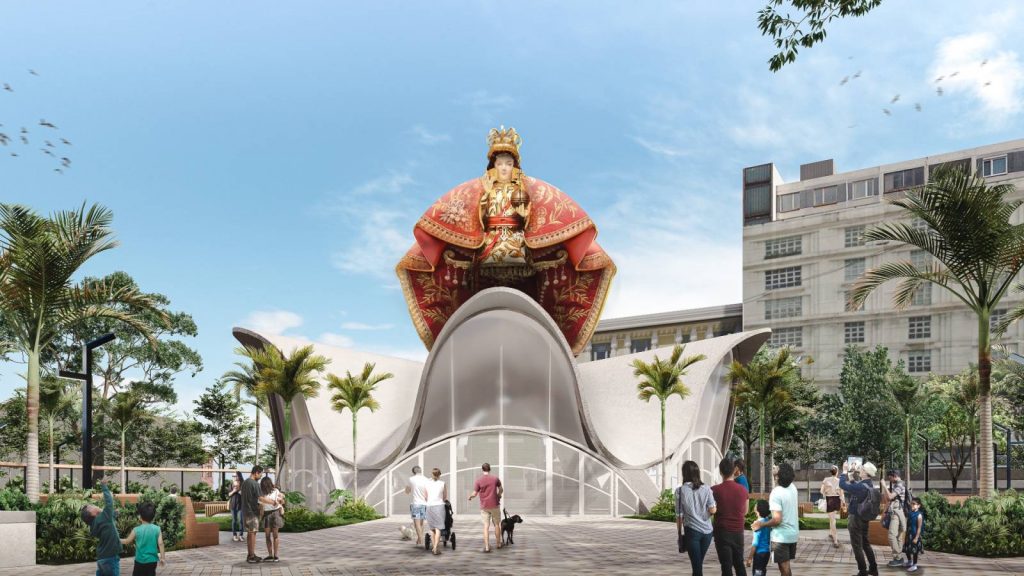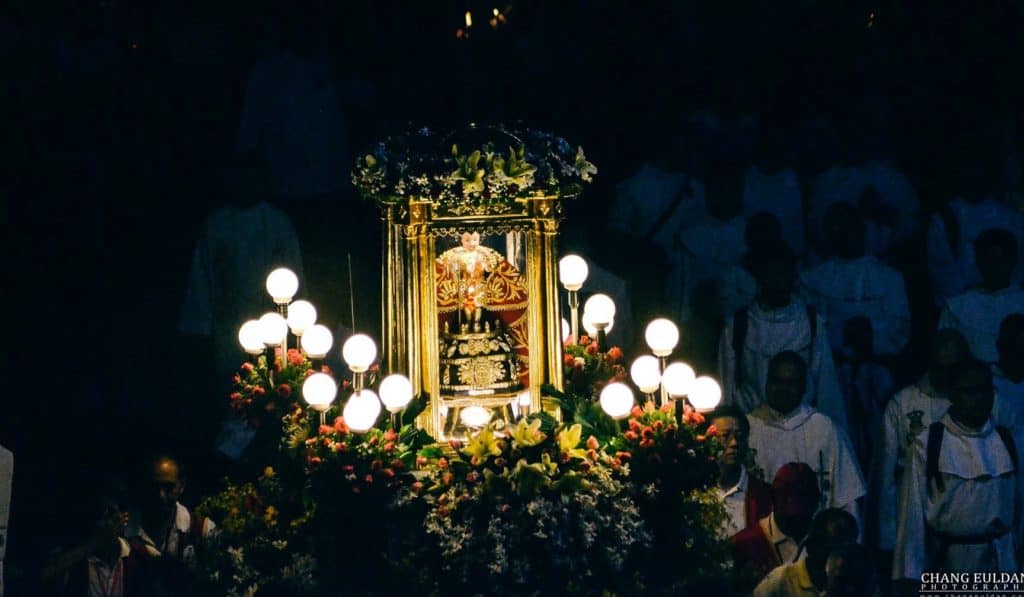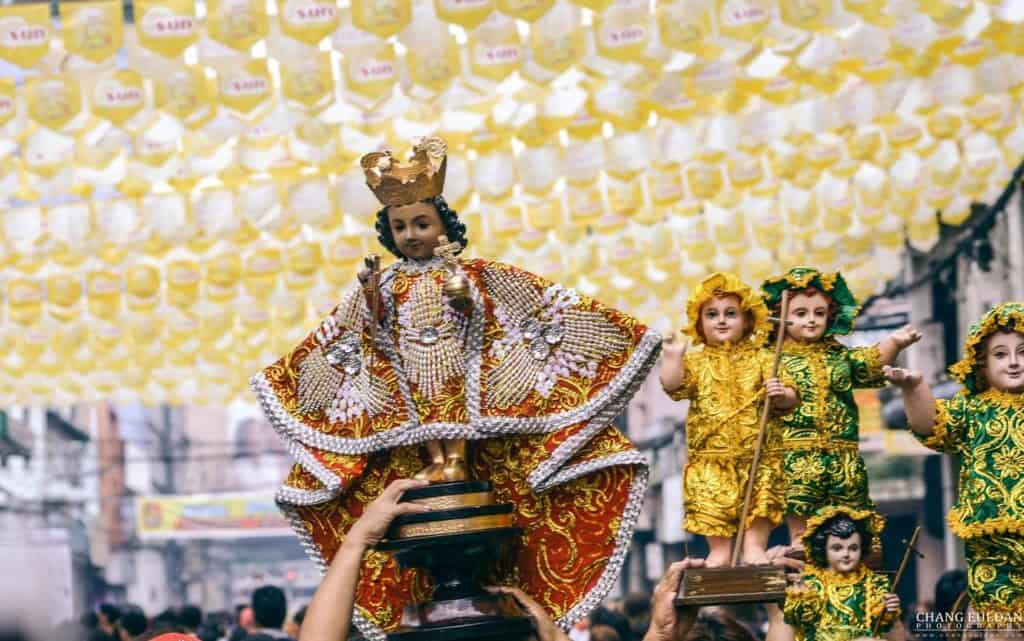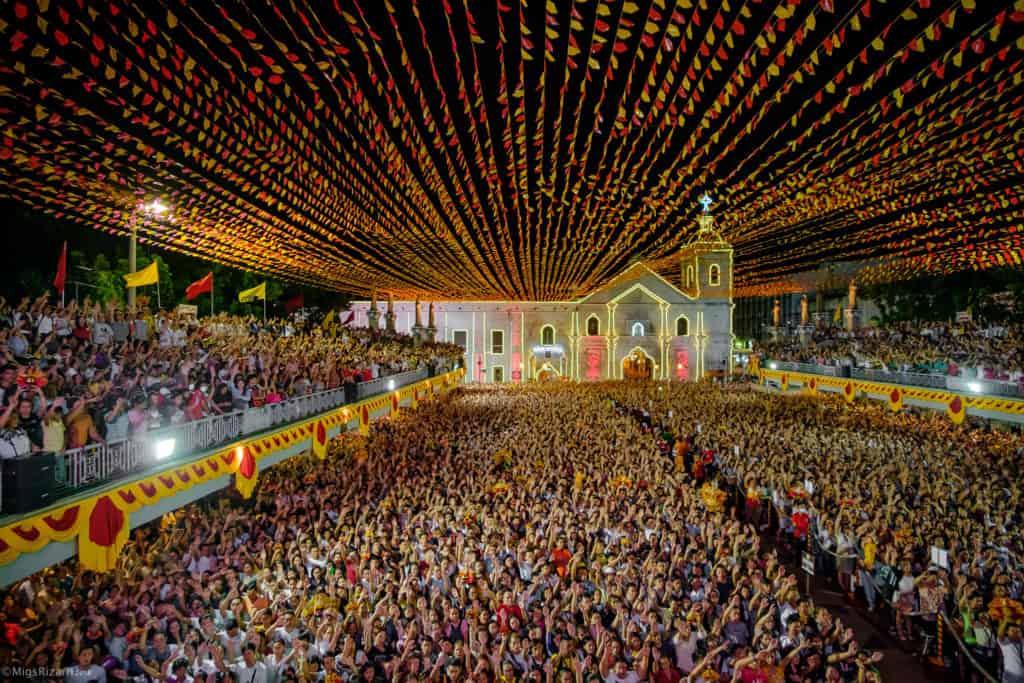A representation of the religious belief and festive spirit of the Cebuanos.

Just in time for the Sinulog Festival celebration held every third Sunday of the year, an eminent figure of the Holy Child – around 30 feet tall – is placed on the chapel roof, watching over devotees and looking out over the Mactan Channel and the Cebu-Cordova Link Expressway (CCLEX).
The Santo Niño statue stands on top of the open-air Santo Niño Chapel, which is still under construction. The chapel is part of the Santo Niño Park development replacing the Señor Citizens Park.
The project is part of the soon-to-rise Modernized Carbon Market by Megawide Corporation through a Public-Private Partnership (PPP) agreement with the City Government of Cebu.
The chapel and park are expected to be completed by the first quarter of 2022.









Cebu’s Sinulog
The Sinulog Festival is a celebration in honor of Santo Niño (Child Jesus). The festival is done by a dance ritual, in which it tells the story of the Filipino people The word “Sinulog” means a graceful dance– a rhythmic and beautiful forward and backward motion that represents the “sulog” (or current).
The Sinulog Festival has been going around for almost four centuries now. Its rich history dates back to old and truly reflects the humble beginnings of Cebu and the birth and growth of Christianity in Cebu and the Philippines.



HISTORY OF SINULOG IN CEBU
Historical accounts say that before Portuguese navigator Ferdinand Magellan came to Cebu on April 7, 1521 to plant the cross on its shore and claim the country for the King of Spain, Sinulog was already danced by the natives in honor of their wooden idols and anitos. Then Magellan came and introduced Christianity. He gave the Santo Nino (image of the Child Jesus) as baptismal gift to Hara Amihan, wife of Cebu’s Rajah Humabon who was later named Queen Juana. At that time, not only the rulers were baptized but also about 800 of their subjects. Unfortunately, however, shortly after the conversion, Magellan went into a reckless adventure by fighting the reigning ruler of Mactan, Rajah Lapulapu, with only a handful of men. He died in the encounter. That was on April 27, 1521.
The remnants of Magellan’s men were however able to return to Spain to report the incident and the possibility of conquest. It took 44 years before a new group came and started the formal Christianization of the islands. Miguel Lopez de Legaspi arrived in Cebu on April 28, 1565. His ships bombarded the village and in one of the burning huts, one of his soldiers named Juan Camus found inside a wooden box the image of the Santo Nino lying side by side with native idols.
Historians now say that during the 44 years between the coming of Magellan and Legaspi, the natives continued to dance the Sinulog. This time however, they danced it no longer to worship their native idols but a sign of reverence to the Santo Nino which is now enshrined at the San Agustin Church ( renamed Basilica Minore del Santo Nino). Of course, through the years since 1521, the dance was a small ritual danced by a few in front of wooden idols or before the Santo Nino. In fact, at the Santo Nino Church where the image is consecrated, only the candle vendors could be seen dancing the Sinulog and making offerings. During the Santo Nino fiesta which falls on the third Sunday of January, children dressed moro-moro costumes also dance the Sinulog. This was really no big event for Cebu City.
The Sinulog Festival reflects how rich the history of Cebu is, how lively and kind its people are and how blessed in many aspects it is. The festivity became a way of sharing the Cebuano culture to the world.


*every third Sunday of January